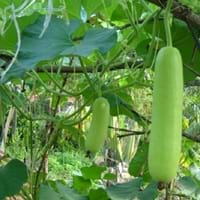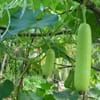Life Span
Annual and Biennials
Perennial
Origin
India, Philippines, Southeast Asia
Hybrid origin, Mexico, Central America, South America
Types
Not Available
Not Available
Habitat
Moist Soils, Tropical Climate
Coastal Regions
USDA Hardiness Zone
5-7
11-15
Sunset Zone
A1, A2, A3, H1, H2, 1a, 1b, 2a, 2b, 3a, 3b, 4, 5, 6, 7, 8, 9, 10, 11, 12, 13, 14, 15, 16, 17, 18, 19, 20, 21, 22, 23, 24
A1, A2, A3, H1, H2, 1a, 1b, 2a, 2b, 3a, 3b, 4, 5, 6, 7, 8, 9, 10, 11, 12, 13, 14, 15, 16, 17, 18, 19, 20, 21, 22, 23, 24
Habit
Vining/Climbing
Upright/Erect
Flower Color
Yellow, Orange, Dark Green
Yellow
Flower Color Modifier
Bicolor
Bicolor
Fruit Color
Yellow, Dark Green
Red
Leaf Color in Spring
Green, Dark Green
Green, Dark Green
Leaf Color in Summer
Green, Dark Green
Green, Dark Green
Leaf Color in Fall
Green, Dark Green
Green, Dark Green
Leaf Color in Winter
Not Available
Green, Dark Green
Plant Season
Summer, Fall
Spring, Summer, Fall
Sunlight
Full Sun
Full Sun
Growth Rate
Very Fast
Fast
Type of Soil
Loam, Sand
Loam, Sand
The pH of Soil
Neutral
Neutral
Soil Drainage
Well drained
Well drained
Bloom Time
Indeterminate
Indeterminate
Tolerances
Drought
Drought
Where to Plant?
Ground
Container, Ground
How to Plant?
Seedlings
Grafting, Seedlings
Plant Maintenance
Medium
Medium
Watering Requirements
Requires watering in the growing season, water on alternate days
Needs more water during establishment
In Summer
Lots of watering
Lots of watering
In Spring
Moderate
Moderate
In Winter
Average Water
Average Water
Soil Type
Loam, Sand
Loam, Sand
Soil Drainage Capacity
Well drained
Well drained
Sun Exposure
Full Sun
Full Sun
Pruning
Cut out old flower stalks, Prune after flowering, Remove branches that rub together, Remove dead or diseased plant parts
Pinch or prune as they grow to promote branching and bushiness
Fertilizers
High potassium diluted feed of 5-10-5, Nitrogen, Potassium
14-14-14 Fertilizer, Compost
Pests and Diseases
Army-worms, Bacteria wilt, Bacterial leaf spot, Blight, Cucumber beetles, Cutworms, Fusarium leaf spot, Leaf rust, Red spider mite, Striped cucumber beetles
Anthracnose, Aphids, Red blotch, Rust
Plant Tolerance
Full Sun, Salt and Soil Compaction, Shallow soil
Heat Tolerance, Salt and Soil Compaction
Flower Petal Number
Single
Single
Fragrant Bark/Stem
No
Yes
Foliage Texture
Coarse
Medium
Foliage Sheen
Matte
Matte
Attracts
Bees, Flies, Flying insects
Aphids, Not Available, Squirrels
Allergy
Hypoglycaemic Coma, Irregular Heart Rhythm
Stomach pain, Vomiting
Aesthetic Uses
Decorating walls, Ornamental use
Used in parkland
Beauty Benefits
Anti-ageing, Making cosmetics
Anti-ageing, Blackheads, Reduce Bruises
Environmental Uses
Food for animals, Insect Repellent
Shadow Tree, Soil protection
Medicinal Uses
Anti-fungal, Blood disorders, Culinary Usage, Diabetes, Gastrointestinal disorders, Laxative, Nutritive, Weight loss
Dehydration, Diabetes, Diarrhea, Nutrients, Weight loss
Part of Plant Used
Fruits
Fruits
Other Uses
Cosmetics, Culinary use, Repellent, Used in making musical instruments
Application in Handicrafts, Food for animals, Showy Purposes
Used As Indoor Plant
No
No
Used As Outdoor Plant
Yes
Yes
Garden Design
Dried Flower/Everlasting, Vine
Edible, Herb, Vegetable
Botanical Name
Lagenaria siceraria
Manilkara zapota
Common Name
calabash, bottle gourd, white-flowered gourd, opo squash
sapodilla , chikoo, Sapota
In German
Flaschenkürbis
Breiapfelbaum
In French
Lagenaria siceraria
Sapotillier
In Spanish
Lagenaria siceraria
chicle
In Greek
Τσότρα
sapodilla
In Portuguese
Cabaça
sapodilla
In Polish
Tykwa pospolita
Pigwica właściwa, sapodilla
In Latin
utrem cucurbita
sapodilla
Phylum
Magnoliophyta
Magnoliophyta
Class
Magnoliopsida
Magnoliopsida
Order
Cucurbitales
Ericales
Family
Cucurbitaceae
Sapotaceae
Clade
Angiosperms, Eudicots, Rosids
Angiosperms, Asterids, Eudicots
Tribe
Not Available
Sapoteae
Subfamily
Papilionoideae
Sapotoideae
Importance of Bottle Gourd and Sapodilla
Want to have the most appropriate plant for your garden? You might want to know the importance of Bottle Gourd and Sapodilla. Basically, these two plants vary in many aspects. Compare Bottle Gourd and Sapodilla as they differ in many characteristics such as their life, care, benefits, facts, etc. Every gardener must at least have the slightest clue about the plants he wants to plant in his garden. Compare their benefits, which differ in many ways like facts and uses. The medicinal use of Bottle Gourd is Anti-fungal, Blood disorders, Culinary Usage, Diabetes, Gastrointestinal disorders, Laxative, Nutritive and Weight loss whereas of Sapodilla is Dehydration, Diabetes, Diarrhea, Nutrients and Weight loss. Bottle Gourd has beauty benefits as follows: Anti-ageing and Making cosmetics while Sapodilla has beauty benefits as follows: Anti-ageing and Making cosmetics.
Compare Facts of Bottle Gourd vs Sapodilla
How to choose the best garden plant for your garden depending upon its facts? Here garden plant comparison will help you to solve this query. Compare the facts of Bottle Gourd vs Sapodilla and know which one to choose. As garden plants have benefits and other uses, allergy is also a major drawback of plants for some people. Allergic reactions of Bottle Gourd are Hypoglycaemic Coma and Irregular Heart Rhythm whereas of Sapodilla have Stomach pain and Vomiting respectively. Having a fruit bearing plant in your garden can be a plus point of your garden. Bottle Gourd has showy fruits and Sapodilla has showy fruits. Also Bottle Gourd is not flowering and Sapodilla is not flowering . You can compare Bottle Gourd and Sapodilla facts and facts of other plants too.



